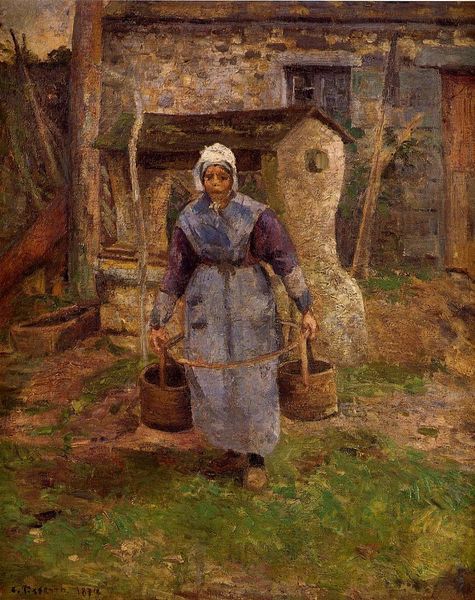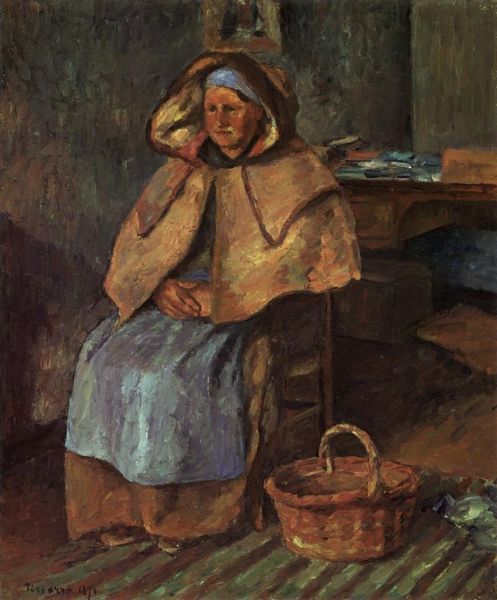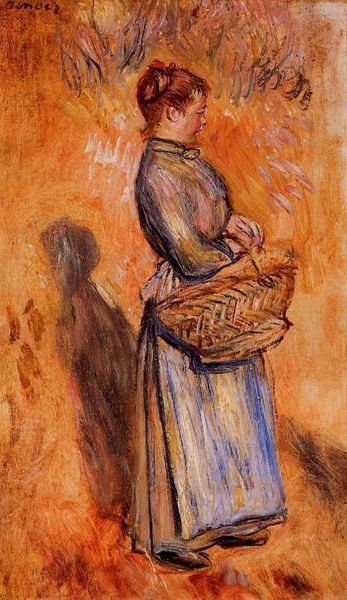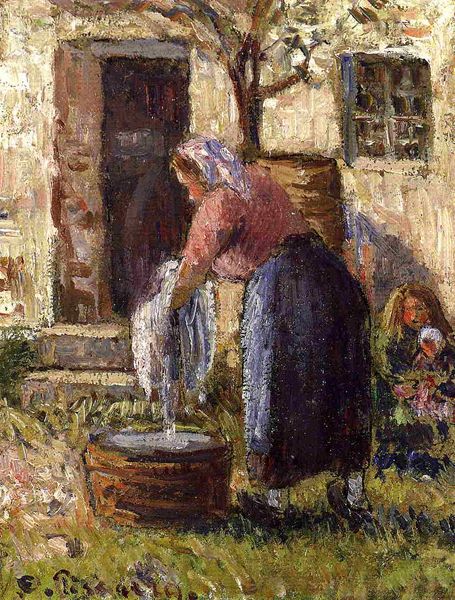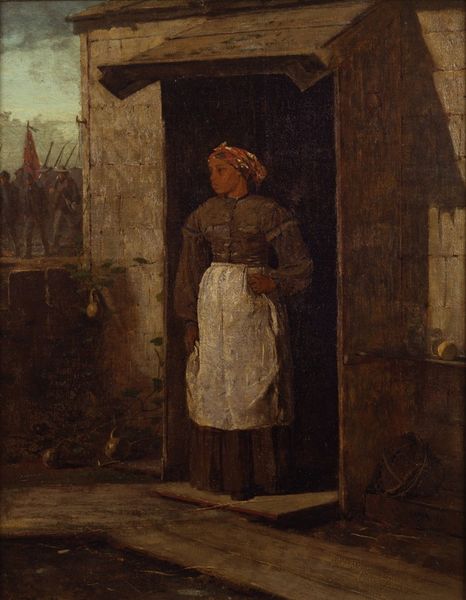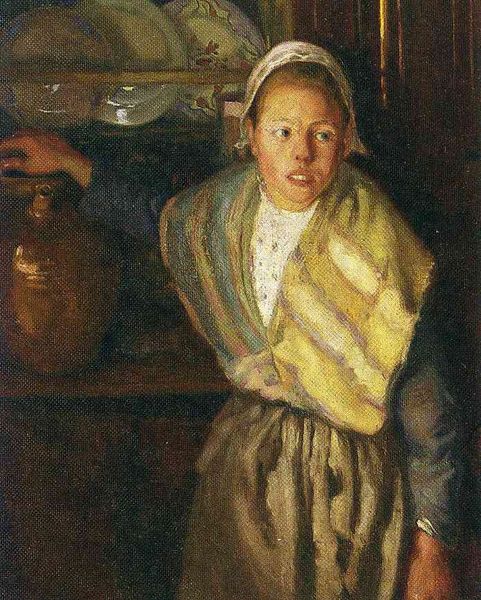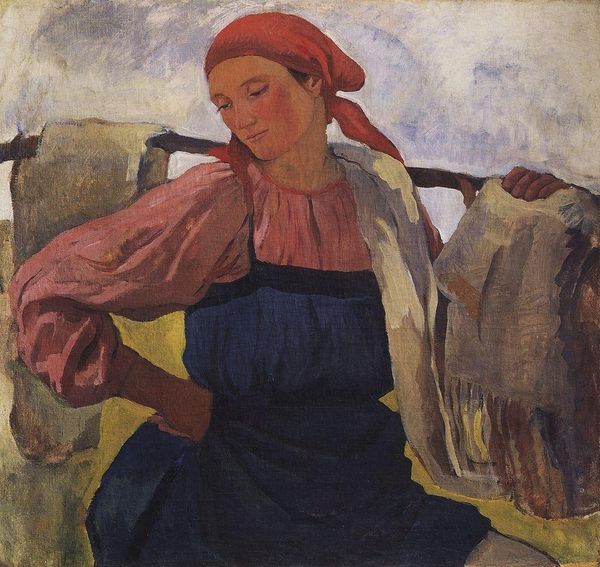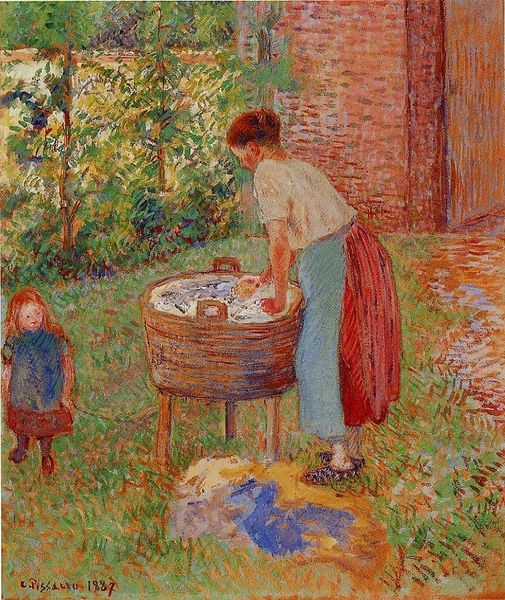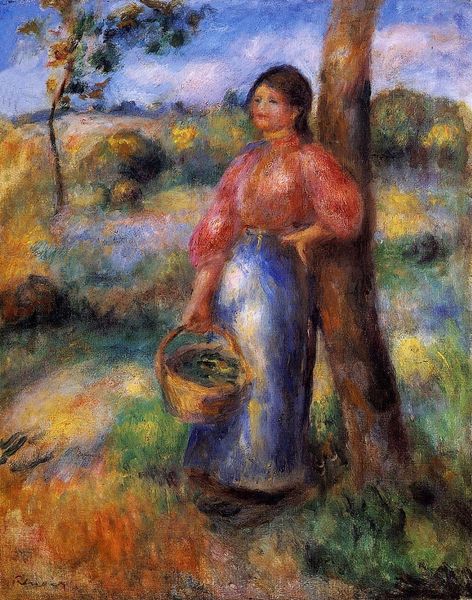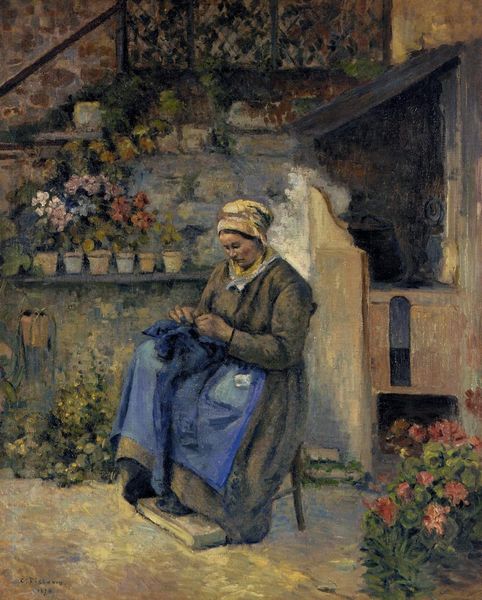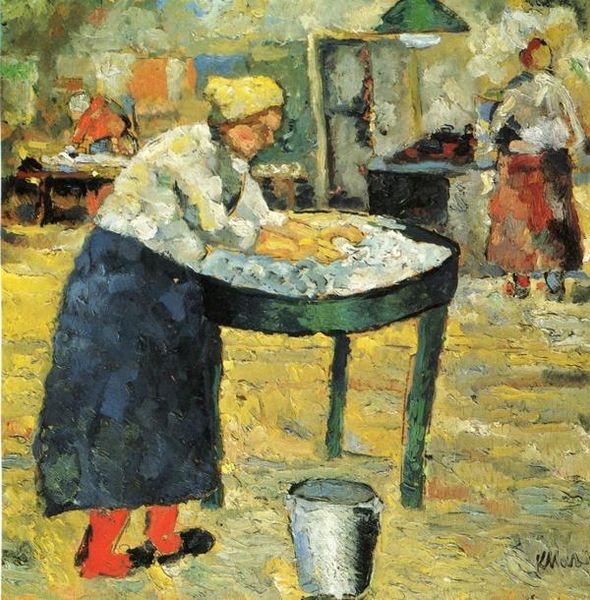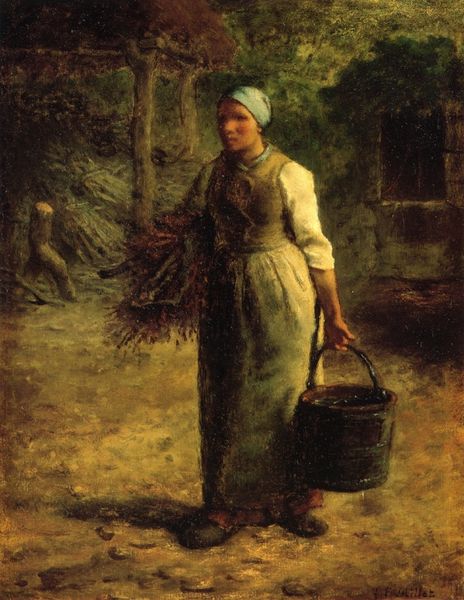
Copyright: Public domain
Curator: Here we have Camille Pissarro's "Woman with Buckets," painted in 1891. The canvas shows a rural scene, dominated by the figure of a woman carrying two buckets, presumably filled with water. Editor: My immediate reaction is the somber earthiness. The color palette is very subdued. Browns, blues and greens blend together in a way that feels both natural and restrained. There's also something powerful in her posture despite her seeming fatigue. Curator: It's a quintessential Pissarro, demonstrating his late-period embrace of a modified impressionist style leaning towards Post-Impressionism, emphasizing the peasant life through almost academic naturalism. He explores themes of labor and the integration of human figures into the broader landscape. Editor: Yes, looking closely, it’s evident Pissarro utilizes broken brushstrokes to construct the form, but with far more deliberate layering than some of his Impressionist contemporaries. The geometric solidity of the building behind the figure and the overall composition anchors the portrait more traditionally, pushing beyond mere fleeting impressions. I am very curious about this tension. Curator: He's situating the laboring class centrally within a socio-political understanding of rural life, and even within the canon of representation. Remember how Pissarro considered the dynamics of class within French society. This work isn't just aesthetically pleasing, but contributes to the contemporary debate around labour at the time. The artwork, like a great portion of art during the end of the 19th century, becomes more than something pretty to be observed. Editor: Agreed. Beyond its technical prowess, the figure and scene evokes profound considerations about rural life and social standing at the close of the century. The weight of those buckets translates, almost allegorically, to broader questions of workload distribution and opportunity that permeated discussions surrounding the working classes. Curator: Exactly! The subtlety is powerful, wouldn’t you agree? It manages to capture a moment while hinting at much larger social realities. Editor: Precisely, what at first glance seemed an unsophisticated depiction grows with the historical lens and becomes surprisingly insightful and critical in the depiction of human value in 1891.
Comments
No comments
Be the first to comment and join the conversation on the ultimate creative platform.
